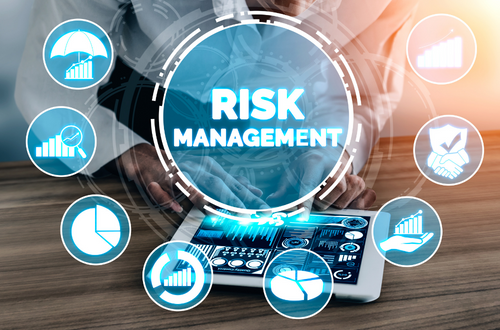What is Risk Management in Information Technology (IT)?
Information technology risk management, also known as “information security risk management,” refers to the policies, practices, and technologies that a business employs to counteract threats from bad actors and lessen information technology flaws that have a negative impact on data confidentiality, integrity, and availability.
Basics of IT Risk Management
IT risk management is a continuous activity that can be carried out across the entire organization or at a more detailed level, such as within a specific department or IT-related project.
The following are the three main steps in IT risk management:
- Risk evaluation and analysis
- Prioritization and appraisal of risks
- Risk reduction through the deployment of internal controls that reduce risk
IT risk management must be a continual effort because threats, business priorities, and infrastructure are always evolving.
What Role Does IT Risk Management Play?
Organizations can better prepare for cyberattacks and seek to lessen the effects of a cyber incident, should it occur, by detecting and assessing potential vulnerabilities with a corporate IT network. An IT risk management program’s procedures and regulations can assist in directing future choices about risk management while keeping an eye on business objectives.
Best Methods for Managing Information Risks
Since attacks can take many various forms and what works for one data asset might not be effective for another, an effective IT risk management program should combine a variety of diverse rules and techniques. However, there are general steps that all businesses may start doing to improve their cybersecurity posture.
In order to make sure that cybersecurity efforts stay up to date with the changing threat landscape, it is crucial that business security teams implement continuous monitoring.
We have listed three of the best practices for running your company’s IT risk management program:
- Observe Your IT Environment – Your business can identify flaws and prioritize remedial tasks by closely monitoring its IT infrastructure. For instance, configuring cloud resources is a challenge for many enterprises. AWS S3 public cloud storage places are not inherently dangerous, but if they are improperly configured, the public, including attackers, can access them. To improve information security, it is possible to find misconfigured databases and storage sites by continuously monitoring your IT environment.
- Keep an Eye on Your Supplies – Your IT risk management approach must include third-party vendor risk reduction as well. Although you have authority over your vendors, it’s possible that you won’t be able to enforce the same legal requirements upon their vendors. You require visibility into the cybersecurity posture throughout your ecosystem as part of your comprehensive information risk management plan.
- Examine Agreement – Legislative governments and industry standards groups have issued stricter compliance rules as data breaches gain more news coverage. A compliance cybersecurity program must include ongoing monitoring as it is mandated by a number of new legislation. This includes the General Data Protection Regulation (GDPR), the California Consumer Privacy Act (CCPA), and the New York Stop Hacks and Improve Electronic Data Security (NY SHIELD Act).
For Businesses Concerned About Cybersecurity, PGH Networks is the Best IT Risk Management Solution
PGH Networks assists in the risk management process by informing all relevant parties of all IT threats across the whole attack surface. PGH Networks outperforms rival capabilities by providing data leak monitoring and cleanup for vendors to greatly reduce the likelihood of third-party breaches.

